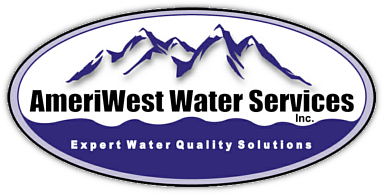Most well waters contain some impurities that react with chlorine during disinfection. Among the most troublesome is ammonia. It may be useful to review the full concept of chlorination so as to understand how ammonia relates to the whole process.
Breakpoint Chlorination: (see fig 7.2)
Breakpoint chlorination is the process of adding chlorine to water until the chlorine demand has been satisfied. Normally in water with a pH of 7.5, approximately 50% of the chlorine present will be in the form of HOCl and 50% in the form of OCl. The higher the pH levels the greater the percent of OCl.
During chlorination of normal water the chlorine reacts with (oxidizes) minerals like nitrate, iron and manganese. No disinfection occurs because of the demand on the chlorine (figure 7.2, points 1 to 2). A chlorine residual combined with other substances has lost its disinfecting strength. If you add a little more chlorine, enough to react with the ammonia present, chemicals called chloramines are formed producing a combined chlorine residual:
NH3 + HOCl ==== NH2Cl + H20 (fig. 7.2 points 2 to 3)
With just a little more chlorine the monochloramines and dichloramines are destroyed. (Fig.7.2 points 3 to 4). Trichloramines are formed past the breakpoint and also may form tastes and odors. Adding just one last amount of chlorine will produce free available chlorine residual. (Fig.7.2 beyond point 4) Free available residual chlorine is the best residual for disinfection. It disinfects faster and without the “swimming pool” odor caused by combined residual chlorine.
Water Containing Ammonia
When chlorine is added to water containing ammonia (NH3), it reacts rapidly with the ammonia and forms monochloramines, dichloramines and trichloramines. The formation of these chloramines depends on the pH of the solution and the initial chlorine-ammonia ratio. Monochloramines are often used for disinfection purposes since they have no taste or odor. Dichloramines have a more effective disinfecting power than monochloramines however, dichloramines are not recommended because of taste and odor problems. At a pH of 6.5 to 7.5 mono and dichloramines exist together. Studies have indicated a dosage of three parts chlorine to one part ammonia will favor the formation of monochloramine.
Historically some water treatment plants have added ammonia to the filter effluent when they chlorinated to purposely produce chloramines. Two advantages of this practice are very long lasting chlorine residuals and the fact that chloramines do not form trihalomethanes. Major limitations of using chloramine residuals are the fact that chloramines are not as effective as free chlorine residuals for disinfecting and have tastes and odors. Additionally, chloramines can have a debilitating effect on individuals with renal disease and who must undergo kidney dialysis.
